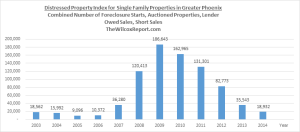Don’t miss this event. I want to invite you to an event on the effect new rules will have on how real estate transactions will close. The new rules which begin on August 1, 2015 apply to most residential real estate transactions in which the buyer is buying with a loan. Don’t wait to learn.
Find out about the new upcoming rules from our panel:
Jim Sexton President of the Arizona Association of REALTORs and designated broker at Realty ONE Group
Chris Mozilo V.P. Quality Control & Compliance for Homeowners Financial Group
Leslie Banes Certified Senior Escrow Officer, First American Title
Moderator: Eric Wright Senior Loan Officer with AmeriFirst Financial
Moderator: Fletcher Wilcox V.P. Grand Canyon Title Agency of FNTA, FNTA is a subsidiary of the Fortune 500 company FNF.
Wednesday, March 18 Be the first to know and prepared on how the rules change for residential real estate
• Five things every real estate agent, every loan officer and every escrow officer must know that happen August 1, 2015!
• Did you know the Good Faith Estimate and the HUD-1 Settlement Statement go away?
• What changes for buyers and sellers • What type of residential transactions are covered under the new rules
* What the National Association of REALTORs says about adding fifteen days to your normal close of escrow time
• We will review the upcoming TILA-RESPA Integrated Disclosure Changes
• We will define the new TILA-RESPA terms • Documents
– We will review the new loan estimate and the new closing disclosure • Timelines – you must understand the new timelines for closing residential real estate
Register today at the Arizona Mortgage Lenders Association Wednesday, March 18
- Orange Tree Golf Resort 10601 N 56th St, Scottsdale 85254 8:30am – Hot Breakfast 9:00 – 11:00am – Panel Discussion
Thanks to our Sponsor Cost — AMLA Member $35.00 AMLA Loan Officer and REALTOR guest — $55.00 REALTORS pay the member price of $35






Follow Fletcher